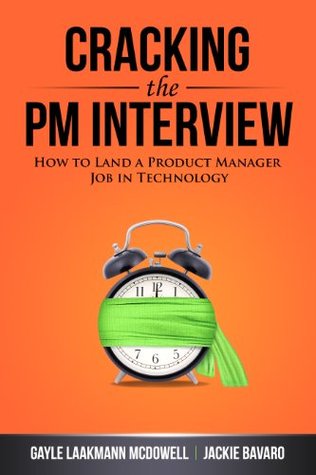More on this book
Community
Kindle Notes & Highlights
Started reading
October 12, 2020
Many companies use the model of Objectives and Key Results (OKRs) to communicate the most important goals of the team.
Great PMs care about their users. They use their product. They do not finish when the spec is done but make sure to to use a working version inside and out. They have great follow through to get things done.
What this also means is that as a PM, you have to recognize that you will never be the best marketer, or engineer, or sales person. You have to be proficient and versed enough in a lot of these areas and have a good sense of how they fit together in the product.
Instead, think about what makes you happy. What is your style – analytical, technical, design-focused, creative? How does it fit with the culture of the organization? Does the product of the company resonate with you? Are you excited to serve the types of customers the company attracts? Do you see yourself working long days with the people you meet during your interviews? Are the problems they are solving exciting to you?
master is
What distinguishes the top 1% of product managers from the top 10? The top 10% of product managers excel at a few of these things. The top 1% excel at most or all of them: Think big - A 1% PM’s thinking won’t be constrained by the resources available to them today or today’s market environment. They’ll describe large disruptive opportunities, and develop concrete plans for how to take advantage of them. Communicate - A 1% PM can make a case that is impossible to refute or ignore. They’ll use data appropriately, when available, but they’ll also tap into other biases, beliefs, and triggers that
...more
powers that be to part with headcount, money, or other resources and then get out of the way. Simplify - A 1% PM knows how to get 80% of the value out of any feature or project with 20% of the effort. They do so repeatedly, launching more and achieving compounding effects for the product or business. Prioritize - A 1% PM knows how to sequence projects. They balance quick wins vs. platform investments appropriately. They balance offense and defense projects appropriately. Offense projects are ones that grow the business. Defense projects are ones that protect and remove drag on the business
...more
ship. They recognize no specific bounds to the scope of their role. As necessary, they recruit, they produce buttons, they do bizdev, they escalate, they tussle with internal counsel, they *. Understand technical trade-offs - A 1% PM does not need to have a CS degree. They do need to be able to roughly understand the technical complexity of the features they put on the backlog, without any costing input from devs. They should partner with devs to make the right technical trade-offs (i.e. compromise). Understand good design - A 1% PM doesn’t have to be a designer, but they should appreciate
...more
This highlight has been truncated due to consecutive passage length restrictions.
the perfect words for key copy (button labels, nav, calls-to-action, etc.), not just words that will suffice. I’m not sure I’ve ever met a 1% PM, certainly not one that I identified as such prior to hiring. Instead of trying to hire one, you’re better off trying to hire a 10% PM who strives to develop and improve along these dimensions. This essay originally appeared on http://www.quora.com/Pro...
This highlight has been truncated due to consecutive passage length restrictions.


